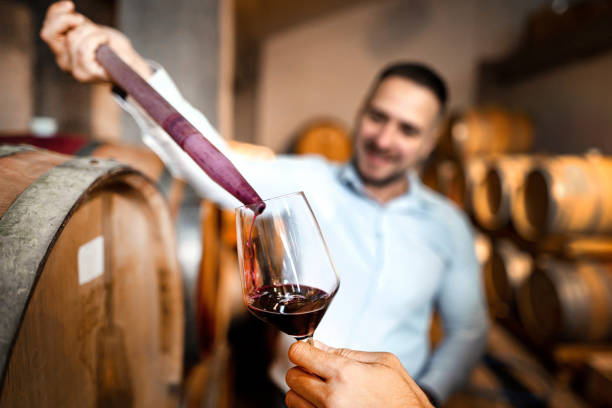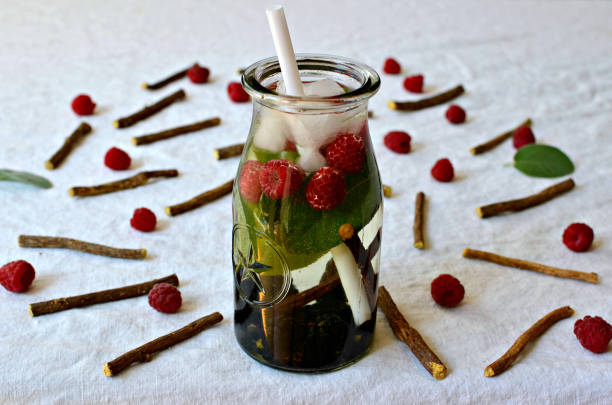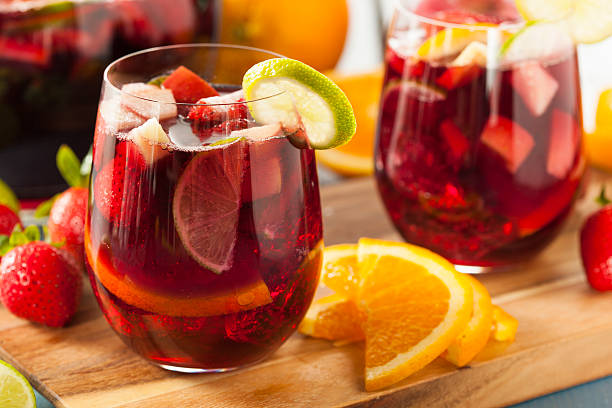It was 2015, and I was tasting wine at a store that no longer exists, staring in puzzlement at a glass of something cloudy and orangish from Chile. It was my first time tasting natural wine’s bacterial infection du jour, a mysterious, microbial Kraken lurking within countless carbonic reds in clear glass bottles with hand-drawn labels.
Unlike other flaws, such as being made of Gewurztraminer (jk!) or being corked, the Mouse often isn’t immediately detectable. While in serious cases, it can be present upon opening, it generally begins to emerge about 30 minutes after, presenting as an off taste that is variably described as “corn nuts,” “puppy’s breath,” and “vomit.” Regardless of when it shows up, it most certainly ruins the wine–no one, it turns out, wants to drink a cot that tastes like a hamster cage.
The thing that has made Mouse more than just your standard-issue wine flaw, though, isn’t just its pervasiveness but its connection to natural winemaking. It has been wielded as grounds for dismissal, a way to paint natural winemakers as unclean, flawed, and inconsistent, not to mention stubbornly dogmatic. But the more one investigates the Mouse, the clearer it becomes that the quality is more nuanced and more transient than originally understood. Instead of being an unfixable problem, it begins to appear more like a flaw in how the wine is understood and contextualized.
The first known reference to Mouse appears in 1894 by way of J.L.W. Thudichum’s A Treatise on Wines and is described as “a peculiar disagreeable flavor in wine … resembling the smell of a residence of mice.” Years later, in 1913, Muller-Thurgau (inventor of the German grape Muller-Thurgau) and his partner Adolf Osterwalder first noticed that about 30 percent of people couldn’t taste mice, linking it to mouth pH. There’s not much before that to suggest that anyone was worried about it, not in the early 20th century or the previous 8,000 years of wine drinking. Likely, it got lumped in with a whole host of other bacterial nasties, all of which have the same traditional solution: the application of sulfur, which the wine writer Aaron Ayscough, in his The World of Natural Wine, describes as being used (sparingly!) since the Hellenic Era.
“The more one investigates mouse, the clearer it becomes that the quality is more nuanced and more transient than originally understood.”
French wines destined for the market around the time mouse was first discovered generally saw 10 to 12 grams of SO2 per hectoliter of juice applied via burning wick or stone, which apparently is enough that Mouse never got much press. After the world wars, mice became even more scarce as industrial winemaking became the dominant mode of production throughout the world. At the end of the century, winemaking manuals were advocating SO2 levels of 20 to 200 grams per hectoliter, which is a true A Desert Called Peace-type scenario. This coincided with two generations of chemicals, developed for our various world wars, being pumped into the soil as fertilizers, herbicides, pesticides, and fungicides.
In his manifesto, Cultural Insurrection, the sommelier, cultural critic, filmmaker, and farmer Jonathan Nossiter writes that by the 1960s, vineyard soils were so laden with dangerous chemicals that it became increasingly difficult for grapes to ferment natively. Thirty years later, in the late ’80s and early ’90s, in nearly every corner of the wine world, small pockets of resistance grew in response to the environmental and human consequences of industrialization, not to mention how lifeless and uniform wine had become. The most famous resisters were the so-called “Gang of Four” (or Five, or Six, etc., depending on which wine importers you ask) in Beaujolais, who, led by the chemist Jules Chauvet, decided to cease using added chemicals, including, in some cases, SO2, in both the vineyard and the cellar. It was a radical inversion of the mid-20th century’s ethos of better living through chemistry.
Mouse quickly became part of the conversation among oenologists and early natural winemakers, eventually crossing over into Paris’s mainstream along with natural wine and then onto New York City in the early 2000s. Fast-forward about a decade, and all of a sudden, the flaw was in everyone’s glass and on everyone’s lips as natural wines achieved critical mass.
Today, we are indeed drinking in a market awash with mousy wine. Given this modern history, it’s easy, then, to blame natural wine zealots for throwing the baby out with the bathwater, conflating dangerous chemicals like Roundup–which frankly is something we need to speak to the Hague about–and sulfur dioxide, which is largely safe, even if you don’t want to get it in your eyes or mucous membranes. But it’s hard to find those zealots; most people within the natural wine community make allowances for small doses of SO2. But, more importantly, SO2 is not quite the silver bullet it once appeared to be.
Pascaline Lepeltier, sommelier and author of Milles Vignes, reports encountering wines that had been doused with SO2 and still showed Mouse. “[Since 2016] you started to see it more outside the perimeter of natural wine [and] since ’18 I’ve tasted it in more… I wouldn’t say conventional wines, but [in wines from] people who are using sulfur,” she says. This is corroborated by sommelier Amanda Smeltz, who told me that she’s tasted mice in wines with 8 to 10 grams of SO2–which is enough to change the taste of the wine but clearly not always enough to prevent microbial activity.
“It takes nine months to create a human, and when it comes out, it can’t walk, talk or feed itself. A bottle of natural wine needs a year to land on its feet. Some are great before [that], but in general they need time.”
More confusing is the question of timing–that is when to add a small dose of sulfur and how that might impact the Mouse’s ability to embed in the wine. All of this contributes to a general feeling that, when it comes to the Mouse, everyone’s just guessing. Many winemakers and experts agree, however, that patience, a thing we’re taught to revere in wine, can be a powerful prophylactic here, too.
According to Ayscough, waiting on wine to resolve–i.e., letting it sit somewhere nice and cool until it sorts itself out–was utilized by the original natural winemakers in Beaujolais. Lepeltier further explains that the molecule that creates the mousy taste, tetrahydropyridine (known as THP), unwinds over time and becomes “imperceptible.” This timeline is, of course, not fully understood, but as Camille Riviere, a natural wine importer based in France and working in the U.S., says, “It takes nine months to create a human, and when it comes out, it can’t walk, talk or feed itself. A bottle of natural wine needs a year to land on its feet. Some are great before [that], but in general they need time.” This is a particular issue with less-affluent winemakers (including many in the natural scene), who are unable to afford to hold back wine and feel pressure to sell them immediately post-bottling. Brent Mayeux, winemaker and proprietor of Stagiaire Wines in the Santa Cruz Mountains, puts it more bluntly: “Mouse is more often than not the fault of importers not waiting,” rather than a flaw with the wines themselves.
Will Ryan, ex-brewer, menswear icon, and founder of the painfully cool Substack newsletter Wild Thoughts, and Pete Bloomberg, the owner and winemaker behind Llewelyn Wines, were both kind enough to explain the biochemistry behind Mouse’s ability to become invisible over time. It largely went over my head, but crucially: THP, aka Mouse, is bound up with Brettanomyces, aka brett, a strain of yeast that is responsible for flavor compounds that run the gamut from incredibly delicious (horsey Rhone syrahs) to pretty gross (pet-nats that taste like Band-Aids). Brett, while often implicated as being a cause of mousy flavors, is also responsible for dissolving them, breaking down one easy-to-taste type of THP into a different, less-detectable one.
Garrett Oliver, Brooklyn Brewery brewmaster and author of The Oxford Companion to Beer elaborated with a concise summary, saying, “Brett, when left alone, creates many of the flavors most prized in classical wines, but when attacked … it creates ‘the funk.’ … The irony is notable.” This lines up with conversations I’ve had with winemakers from all over the wine world, in which Mouse is viewed as a temporary phenomenon that is tied to moments of disturbance in the wine: racking, bottling, and, crucial for people in the United States drinking imported wine, shipping.
The connection of the Mouse with disruption in winemaking and storage goes even further. Years ago, in Catalunya, a respected winemaker linked Mouse in the glass with drought vintages, saying that the pH disturbances in the vineyard often resulted in wines that needed more time to resolve. Smeltz says that the vagaries of climate are more apparent in natural wines, leading to “less-stable wine because the agriculture itself is not stable… We don’t see that in industrial wine because it’s not transparent, but in natural wine you see the difficulty of climate.” In other words, natural wine’s monomania at presenting an unadulterated wine means that, over the last few decades, we’ve been tasting vineyards that are struggling to adapt to a climate that is veering off-kilter in seemingly new ways each vintage.




